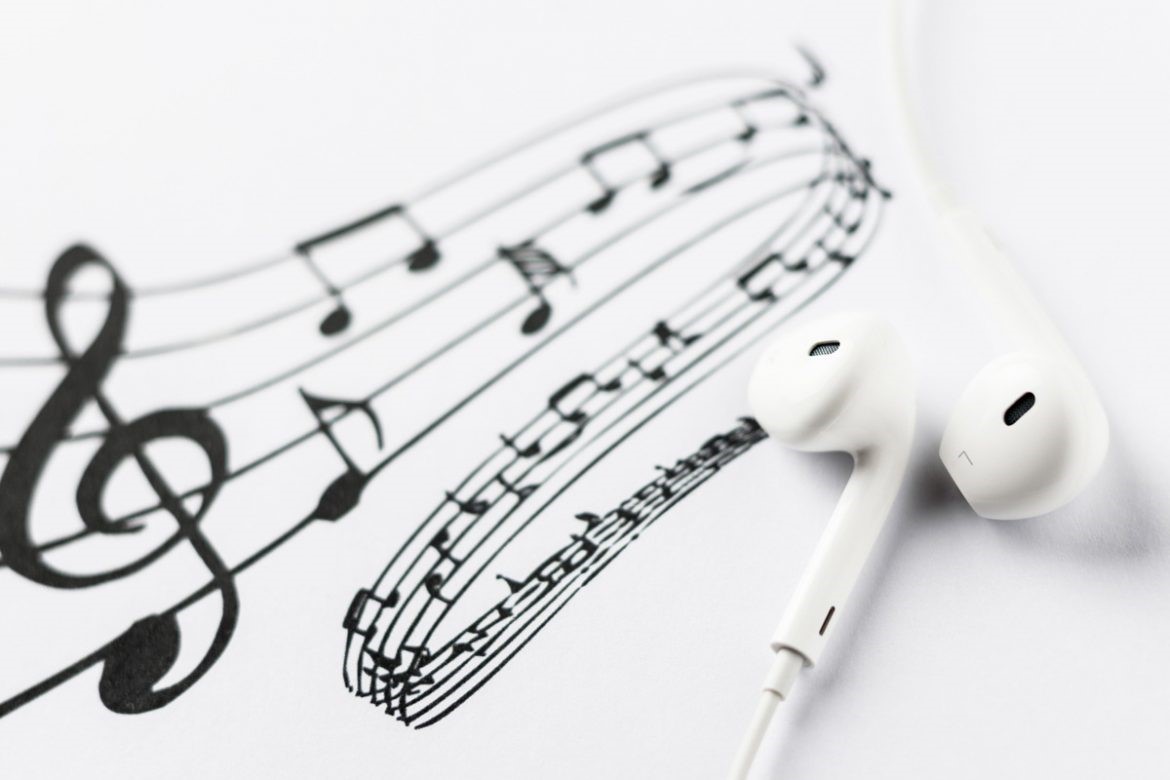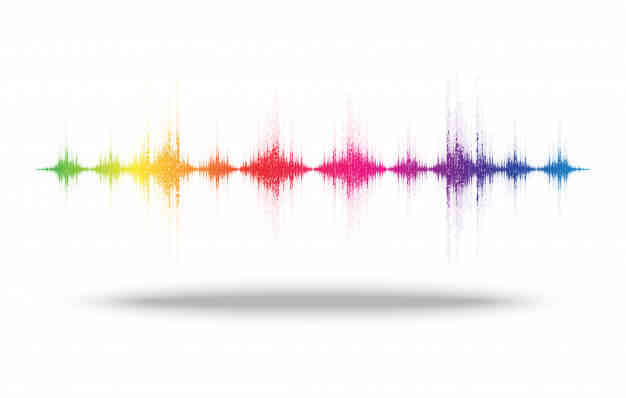Familiarity with various podcast formats
The podcast format is one of its unique features. Each podcaster benefits from a specific format for their audio content based on their facilities and tastes, as well as according to the platforms through which they share their podcasts. In this article, we will try to get acquainted with the formats that can be used for podcasts.

What is meant by podcast format?
Podcast format means data that is recorded as audio. These recorded data differ regarding elements and characteristics, such as volume, quality, etc. Therefore, to distinguish them from each other, the desired format should be used in the title of the audio content.
Be careful if the desired audio file format is not the same as the one supported by the audio player. Playing it will not be possible. Therefore, knowing what forms you can use to produce audio content is essential. In addition, you should be familiar with the different formats supported by various podcast hosting platforms.
Introduction of various audio file formats
In summary, if we want to consider the types of audio formats for different stages and how to produce a podcast, we should know that all formats fall into two main categories. Audio formats are compressed (compressed audio format) or uncompressed (uncompressed audio format). In the following, we will get acquainted with the types of these formats.
Review of types of Uncompressed Audio Format
Uncompressed audio format refers to audio content not compressed to be available to users. Generally, AIFF, PCM, BWF, and AU formats are among these formats.
It is essential to know that if you use them as your podcast format, you must devote a lot of space to them. The reason for this is that these types of formats are generally designed more for systems like CDs. Of course, you don’t want your one-hour podcast file to occupy about 700 megabytes of your computer’s hard drive.
Review of types of compressed audio format
If you intend to go for various compressed audio formats for your podcast format, it is good to know that these formats are divided into two main categories. One of them is a format in which audio content will be accompanied by quality loss, and the other is a format that will not affect the quality of the content.
MP3, WMA, AAC, OGG, RA, and M4A formats are included in the first category, while CDDS, WAV, FLAC, and ALAC audio formats are included in the lossless compressed audio format category.
The thing that is very important to know about the types of compressed audio formats with loss of quality is that compression is done in a way that can cause the loss of part of the data. The same thing leads to a decrease in the size of the file. This deletion of data, for example, in MP3 format, means the deletion of waves that the human ear cannot hear.
MP3 format
It can be said that the MP3 format is the most popular format for podcasts and audio content worldwide. The reason is straightforward, many audio players support it, and MP3 formats can be heard with any device.
WMA
For the first time, Microsoft released the WMA audio format to the market. Compression in this format is done well, and since most playback devices can support it, it can be said that it is one of the most desirable types of podcast format. Be careful that the quality of this format is the same as the quality of the MP3 design, but the volume it occupies is about half of the volume of MP3.
AAC
AAC audio format is another popular format for podcast production. In this format, an advanced coding method is used so that the quality of the format can be maintained well. Be careful that one of the essential advantages of using this format as a podcast format is its multi-channel audio technology. This way, you can separate the audio channels and improve their quality.
OGG
In a way, it can be said that the OGG format is one of the newest audio formats available. This format was supposed to replace the popular MP3 format, but the project failed. The fact is that using this audio format as a podcast format is not recommended at all.
RA
The RA format is designed for listening to music or watching movies online. Therefore, its quality is not to the extent that it can be used for podcast recording and production.
M4A
The M4A audio format is specially designed and produced by Apple for its products. In a way, it can be said that the quality of this type of format is similar to the quality of MP3. But there are also differences. Among other things, M4A is more compressed than MP3 format. That is why its volume is much smaller than MP3. In general, it can be said that almost all playback devices support this audio format.

Which audio format should we use?
If you plan to use one of these audio formats as your podcast format, it is better to know a few simple things before making the final decision. The most important point is that the quality and output of sound are usually essential for podcasters. To achieve your ideal podcast in terms of audio, our recommendation is to use compressed audio formats without losing quality. This will maintain the quality of the work.
One of the most important points to consider when producing and recording podcasts is the platform responsible for broadcasting your audio content. Our recommendation is to use two main formats to be compatible with these platforms and, at the same time to maintain the quality of your work.
Our recommendation is to use the WAV audio format for the podcast format. This format is among the compressed audio formats without quality loss. Then, after completing the various stages of producing your podcast, make the output in MP3 format.
What is a podcast?
A podcast is derived from the two words iPod and broadcasting. Podcasts can even be published as simple video clips or as audio. Professional, amateur, comedy, in-depth discussions on legal or political issues, etc., are discussed in the podcasts.
Podcasts are similar to TV or radio programs. But the difference between them and these programs is that people can listen to a podcast whenever they want. But a TV program is broadcast at the right time.
Podcast style and format
The way to produce a podcast according to a specific format or framework is that the creator chooses what purpose the podcast will follow and what pattern it will be produced according to. If you intend to produce a podcast, you should choose a more convenient format. For example, if you like to make a podcast by yourself, choosing a podcast in monologue format is the best option.
The interview podcast is the most common form of a podcast. In this type of podcast, the presenter talks to the program’s guests. Guests can be chosen from celebrities, politicians, or any inspirational person. Dramatic podcasts are produced to present a comedy or fictional theater. In them, scriptwriting and acting play a significant role.
How to prepare for podcast production?
How to produce a podcast has several steps that are determined during the planning of the editor. Among them, these important steps can be mentioned:
- Choosing a format and topic: You need to think about the topic you want to discuss with the audience. Most professional podcasters choose a topic that interests them. It is better to check the statistics and information of Google Analytics to see what topics people are interested in.
- Choosing a podcast name: Choosing an attractive and unique name is one of the most important steps for producing a podcast. It is worth noting that having a dedicated website for your podcast is very important. Your podcast name should be short, direct, and memorable.
What equipment is needed to produce audio content, and how to choose them?
Knowing how to produce a podcast is complete if you have researched the list of required equipment. You can start with a mobile phone and a headphone. But you will not get much quality from the delivered output.
Therefore, starting your work with the most professional and, at the same time, the most necessary equipment is better. You should know precisely why you are making a podcast. What is your strategy to attract an audience? Do you have a brand you want to produce a podcast for? Etc.
When you first start producing podcasts, you’ll need this equipment:
- Computer or laptop
- Microphone
- Headphone
- Pop filter
- Microphone stand
- Mixer
- Sound processor or sound card
The quality of this equipment depends on the brand and model you choose. You can record your podcast in a private studio or a small room.

The best podcast recording and editing software
These days, there is a wide variety of podcast creation or editing apps. Many people can’t correctly choose the right software for editing podcasts. Meanwhile, knowing the best and most famous of these software allows you to edit your podcast without trial and error.
There is various software, such as Audacity, GarageBand, and Anchor, that you can use to edit your podcast.
The best podcast platforms
Where to publish the podcast? Instead of uploading the podcast to Spotify or Google Podcast, you should publish it on a host. Then publish on other platforms. You can upload your podcast to RedCircle and Anchor. These three items come from popular and famous platforms that many podcasters use.
Create a dedicated podcast website.
Establishing a website is one of the most important steps in making a podcast. The rules of how to produce a podcast will tell you to think about developing a website for your podcast to communicate more effectively with your audience. You can upload new episodes of your podcast to your website. You can also have a magazine/blog to show your expertise and knowledge to your audience.
Promote and promote the podcast on social media.
Promoting a startup/professional podcast on social media is essential to increase audience numbers. You must be present on Twitter, Facebook, Instagram, Telegram, etc. People get to know you through these platforms and can communicate with you more effectively.
Start producing a podcast.
Starting a podcast production requires thinking, proper planning, and research. Once you have the original idea for your podcast, start looking for topics for new podcast episodes. Then get down to business and produce the first episode. Doing research and getting content from reliable sources is very important.
Conclusion
Of course, if, in addition to making podcasts, you are also involved in audio editing and can work with different audio formats. As a result, quality is more important to you. Go for audio formats that exist in uncompressed form.











